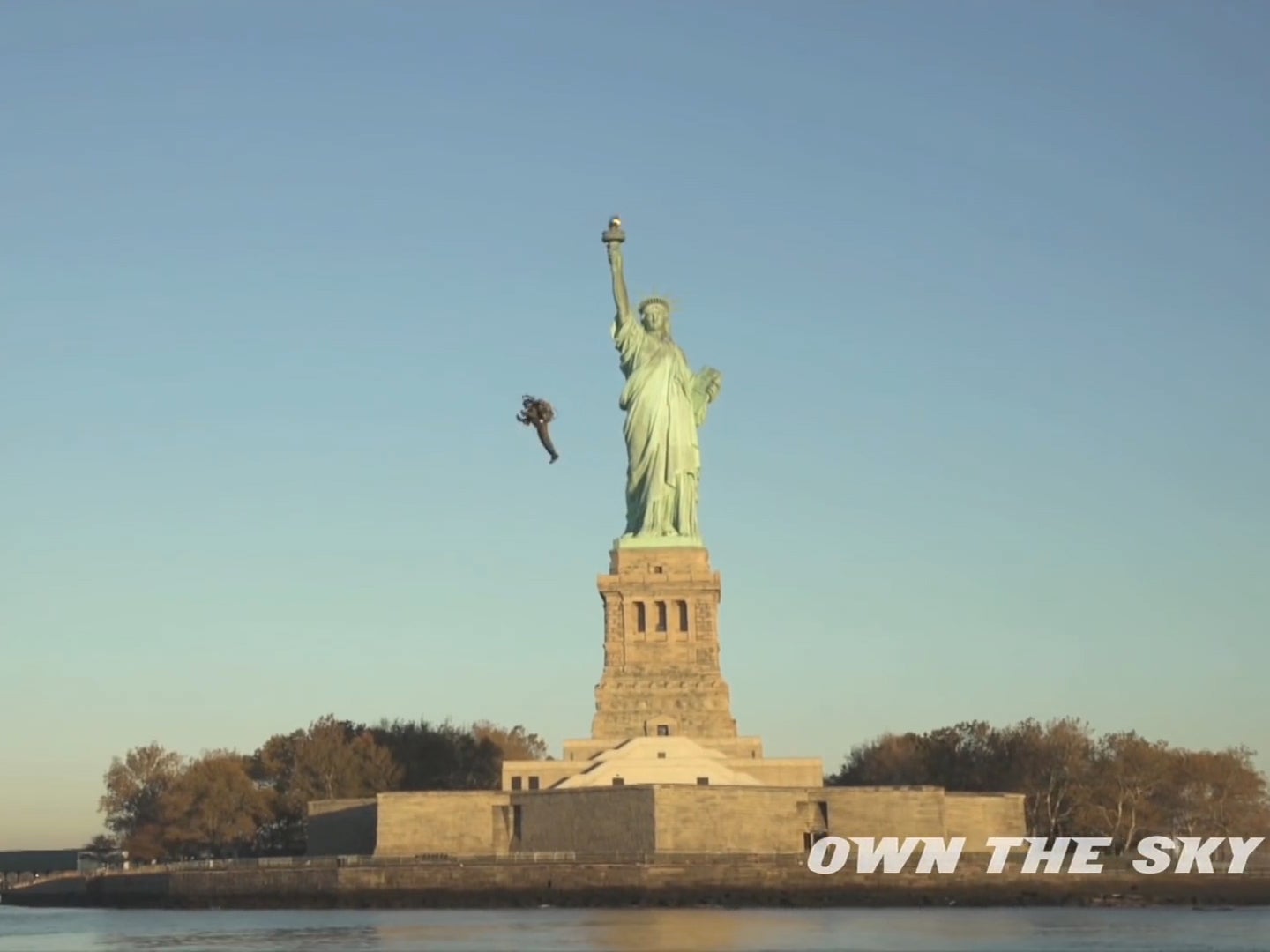JB-9 jetpack: James Bond's futuristic Thunderball gadget has become a reality
Australian entrepreneur David Mayman took a solo flight around New York's Statue of Liberty, powered by a device that is the culmination of 10 years of research by his company, Jetpack Aviation

It's been the plaintive cry for years of anyone who grew up with science fiction: "Where's my jetpack?" For the jetpack commute, along with holidays on the Moon and roast dinners in pill form, has been the symbol of the bright, shiny future promised to us by optimistic authors and movie-makers for the best part of a century.
But perhaps the future is now here. Consider Australian entrepreneur David Mayman, who this month took a solo flight around New York's Statue of Liberty, powered by a device that is the culmination of 10 years of research by his company, Jetpack Aviation.
Gadget and tech news: In pictures
Show all 25The JB-9 uses "scaled-down airline engines", says the company, to enable the wearer to reach heights of 10,000ft, with a top speed of just over 100km per hour, with a flight time of around 10 minutes. And while this prototype might be a one-off, don't think jetpacks are just moneyed businessmen's vanity projects. New Zealand-based Martin Aviation has been pushing towards commercial production of jetpacks for 30 years, and at the Dubai Airshow this week signed a contract to supply 20 of its £165,000 jetpacks to the Dubai Civil Defence Force, who say they will use the devices for "reconnaissance and rescue" missions.
Jetpacks have been a staple of science fiction ever since the glory days of the pulp magazines of the 1920s – one of the first examples is on the cover of Amazing Stories magazine from 1928. The 1949 cliffhanger serial King of the Rocket Men had a hero who took to the skies with an alarming firework attached to his back, and the comic book The Rocketeer, made into a film by Disney in 1992, also paid homage to the whole idea.
Jetpacks are such a feature of our collective cultural consciousness that the Beef and Lamb Marketing Board's latest TV ad, launched this month, features a dad offering to sort out dinner, and taking a jetpack journey home, with the added twist that his rocket-pack also doubles up as an oven in which he's cooking the roast as he commutes. Now that's progress for you.
US author Daniel H Wilson wrote a book entitled Where's My Jetpack? (he's also the author of Robopocalypse, currently in development as a movie by Steven Spielberg) and he's pretty excited about the latest developments. "This is great news for jetpack enthusiasts worldwide," says Wilson. "Military applications often drive scientific research, and this investment could propel humankind into a new generation of jetpacks.
"The original jetpack, called the Bell Rocket Belt, was developed for the United States military in the 1960s and development stalled because the Army couldn't find a practical use for it. The towering skyscrapers of Dubai present unique challenges that may well need a rocket-powered solution."
The Bell Rocket Belt was used in the Sean Connery James Bond movie Thunderball, and at the US Olympics in 1984 but, as Wilson says, it was unwieldy and had limited capacity due to the storage space required for its hydrogen peroxide fuel. A couple of years ago, the development of a water-powered jetpack – which sucked up water and sprayed it out at force from the wearer's boots, allowing them to "fly" – created a new extreme sport, "flyboarding". But until now, the dream of a proper, personal jetpack device hasn't seemed feasible.
The term "jetpack", incidentally, can cover anything from mini-rockets to petrol engines to, as the Martin Aviation technical specifications show, a device that sucks in air, accelerates it with rotors, and pushes it out at force to create lift. So is the device David Mayman used to fly around New York an actual jetpack? "As far as we're concerned, a jetpack is something that you can take off and land from vertically," says Mayman. The official Jetpack Aviation line is: "When someone else develops a jet engine (not a gasoline-powered ducted fan that weighs several hundred kilos) backpack that the pilot can jog down the road with – then we will change the title."
Despite the price tag that Martin Aviation puts on its personal jetpacks (which, they say, will be available in 2017), it's more than likely there'll be one or two takers. But can you legally fly one? The Civil Aviation Authority, which is responsible for regulating anything that goes up over British airspace, says that, to date, they have not been asked to certify any jetpack design, but point out that if jetpacks are to be classified in any way as aircraft, then the user will be designated as a pilot and will need some kind of licence.
A spokesperson says: "Anything that uses airspace is subject to the rules of the air, even if it is 'foot-launched', like a hang-glider, or indeed a jetpack. These rules prevent aircraft flying within 500ft of people, vehicles or structures, or below 1,000ft of the highest point in built-up urban areas. All airspace users are also solely responsible for avoiding collisions when flying outside of controlled airspace."
So perhaps, despite all this excitement, the jetpack commute is still a little way off. Still, it's nearer than that holiday on the Moon.
Subscribe to Independent Premium to bookmark this article
Want to bookmark your favourite articles and stories to read or reference later? Start your Independent Premium subscription today.

Join our commenting forum
Join thought-provoking conversations, follow other Independent readers and see their replies